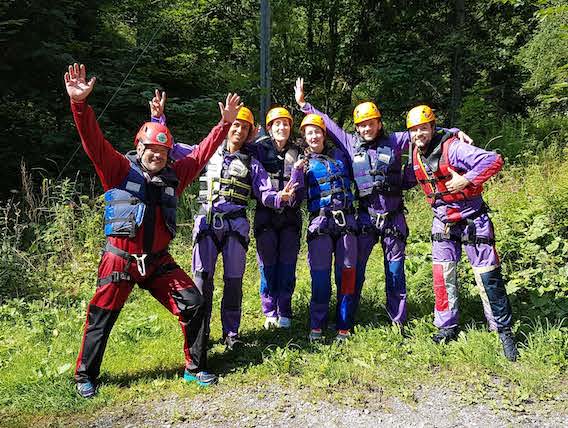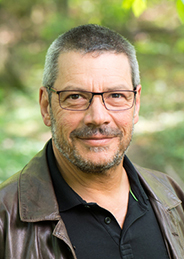The main focus of the group concerns the understanding of the interplay of population structure, trait architecture, and selection. For this, we use different approaches, from theory and the development of statistical tools to field observations. The main biological models currently used are the barn owl (in collaboration with Prof. Alexandre Roulin), and Miniopterus bats (with Prof. Philippe Christe). On the theoretical side, we investigate the dynamics of multilocus genetic system under the influence of selection, migration and drift, developed conprehensive individual based models and develop statistical methods to infer selection, mating systems and population structure.

quantiNEMO
Collaborator(s): Samuel Neuenschwander
We developed, and are still actively developing, the computer program quantiNEMO, an individual-based, genetically explicit stochastic simulation program. It allows investigating the effects of slection, mutation, recombination and drift on quantitative traits with varying architectures in spatially structured populations connected by migration and located in a heterogeneous habitat. See quantiNEMO website
Statitical methods & Software developments
Collaborators: Samuel Neuenschwander , Frédéric Hospital (INRA), Nicolas Perrin, Peter Waser (Purdue, USA), Guillaume Evanno (INRA), Helene Collin
Molecular markers are plentifull nowadays, and of different types. The type of information that these markers can provide for understanding different aspects of the ecology of species is enormous, but largely unexplored. For instance, we showed that sex-biased dispersal can be detected using genetic markers. Statistical tools for analysing genetic data are often complex, and require specific packages. To this end, I developed the package hierfstat for R, and the following programs: FSTAT, which estimates and tests gene diversities and F-statistics, among other things; PCAGEN , which carries out Multivariate Analysis on genetic data. FSTAT and PCAGEN are no longer under development, but their functionalities are integrated step by step in the hierfstat package.
When applied to individuals, multivariate analysis allows the identification of clusters of individuals. I am currently investigating how a coupling of Multivariate analysis and clustering can help in identifying clusters of individuals.
Once the tools have been developed, they need testing. We are also investigating using computer simulations (e.g. quantiNEMO) how these tools perform.
Estimating population history and selection with genetic markers
Collaborators: Samuel Neuenschwander, Sylvain Antoniazza, Ricardo Kanitz, Ludovic Dutoit
We use spatially explicit Approximate Bayesian Computation to infer the past history of different species (the barn owl, humans). We used the inferred demo-genetic parameters in further simulations to assess the strength of selection on quantitative traits (in particular, whether the strong cline in colour observed across Europe in the barn owl could be the result of purely neutral processes), and attempt to infer the trait architecture.
We have also developed RAD-TAGs to estimate the population structure of the Miniopterus bat in Europe
Barn owl population genomics
Collaborators: Alexandre Roulin, Reto Burri (U. Uppsala, Sweden), Ioannis Xenarios (Vital-IT)
This project aims to develop genomic markers to gain a better understanding of the population biology and selective pressures acting on barn owls. To this end, we intend to sequence the European barn owl genome, and develop a dense map of genetic markers in order to detect, using different scales (individual, pedigreed local population, european scale, worldwide scale) signature(s) of selection left in the genome.
Soil metagenomics
Collaborators (PIs): Ian Sanders, Antoine Guisan, Marco Pagni (Vital-IT), Nicolas Guex (Vital-IT)
We investigated the fungal biodiversity of alpine soils using ca 200 permanent plots in the western Swiss Alps. We used 454 sequencing and a new bio-informatic pipeline to analyse and cluster over 1 Million ITS sequences, and used this data to investigate how fungal species are distributed in the soil at different scales and whether this distribution can be linked to abiotic and/or biotic factors.
Multi locus interactions, population bottleneck and genetic variance
Collaborators: Guillaume Martin, Yamama Naciri-Graven (Geneva) and Alex Ding.
Both theoretical and empirical studies have pointed to the puzzling result that while bottlenecks (the reduction in size of a population) diminish genetic variability, in some cases they lead to an increase in additive genetic variance. Epistasis (the non-additive action of genes at different loci on one character) seems to play a major role. Using multilocus models, we are trying to understand
- What type of genotypic values lead to stable polymorphic equilibrium?
- Can multilocus epistasis help in maintaining additive genetic variance following bottlenecks ?
We've answered partially the last question (yes,it can!), but we need to add selection to the model. Also, matrices of genotypic values are generated at random for the moment, but eventually, we want to link our work with metabolic control theory.
Advanced search is available through Serval
Publications can be managed by accessing Serval via MyUnil
Phd thesis
Publications (17)
Group Leader
Post-docs
Graduate students
PhD studentship available
Staff
Looking for bioinformaticians / statisticians / programmers. Interested?
External Scientific Collaborators
- Dr. Tristan Cumer
Former group members
- Syvain Antoniazza
- Débora Brandt (Brazil)
- Dr. Elodie Chapuis
- Eric Dexter
- Dr. Alexandre Ding
- Guillaume Dumont
- Ludovic Dutoit
- Dr. Guillaume Evanno
- Dr. Benoît Facon
- Dr. Mélanie Glaettli
- Dr. Frédéric Guillaume
- Dr. Elsa Guillot
- Dr Frédéric Hospital
- Dr. Nicolas Juillet
- Ricardo Kanitz
- Eléonore Lavanchy
- Dr. Guillaume Martin
- Ana Paula Machado (co-supervised by Prof. A. Roulin)
- Dr Patrick Meirmans
- Frédéric Michaud
- Dr. Valeria Montano
- Dr. Samuel Neuenschwander
- Luca Pescatore
- David Roy
- Sonia Sarmiento Cabello
- Laure Sauteur
- Dr. Sandrine Trouvé
- Prof. Bruce Weir

